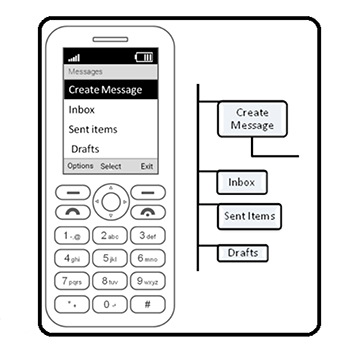We propose a user-usage model to describe and predict the technological adoption of information and communication technology (ICT) by the users who have been significantly disadvantaged in terms of their capabilities to access, learn, and use ICT artefacts and, at the same time, could benefit from them in terms of an improvement in quality of life. We have termed this class of users as the "Emergent Users" (EU) to signify the hope absent in terms such as "poor," "low-literate," etc.
We define technology adoption as the initiation, learning, and sustenance of usage. It is well appreciated that ICT could benefit the EUs in many ways, such as improving the access to and the efficiency of education, healthcare and governance: and helping in the livelihood activities. However, an ICT intervention may not reach its potential if technology adoption is inadequate. That implies that, if we aim to design ICT artefacts that are meaningful for the EUs, we need to study technology adoption by them.
The user-usage model is a two-dimensional categorical matrix. Depending on user-related factors such as age, gender, prevalence, etc. (the input variables), the "placement" of a user in the user-usage model (the output variables) could be decided. The vertical dimension of the model represents the user types—the archetypal categories of the users based on their usage patterns. There are six user types. Basic users do only the tasks that require one or two presses of hardware buttons. Navigators can navigate the menu hierarchy. Text inputters can type text. Saver can follow, design, and manage the directory structures to save files. Account holders can use account based applications to manage online identities and communicate with other accounts. Transactors can buy things online. The user types are arranged in increasing order of their ability to deal with complexity.
